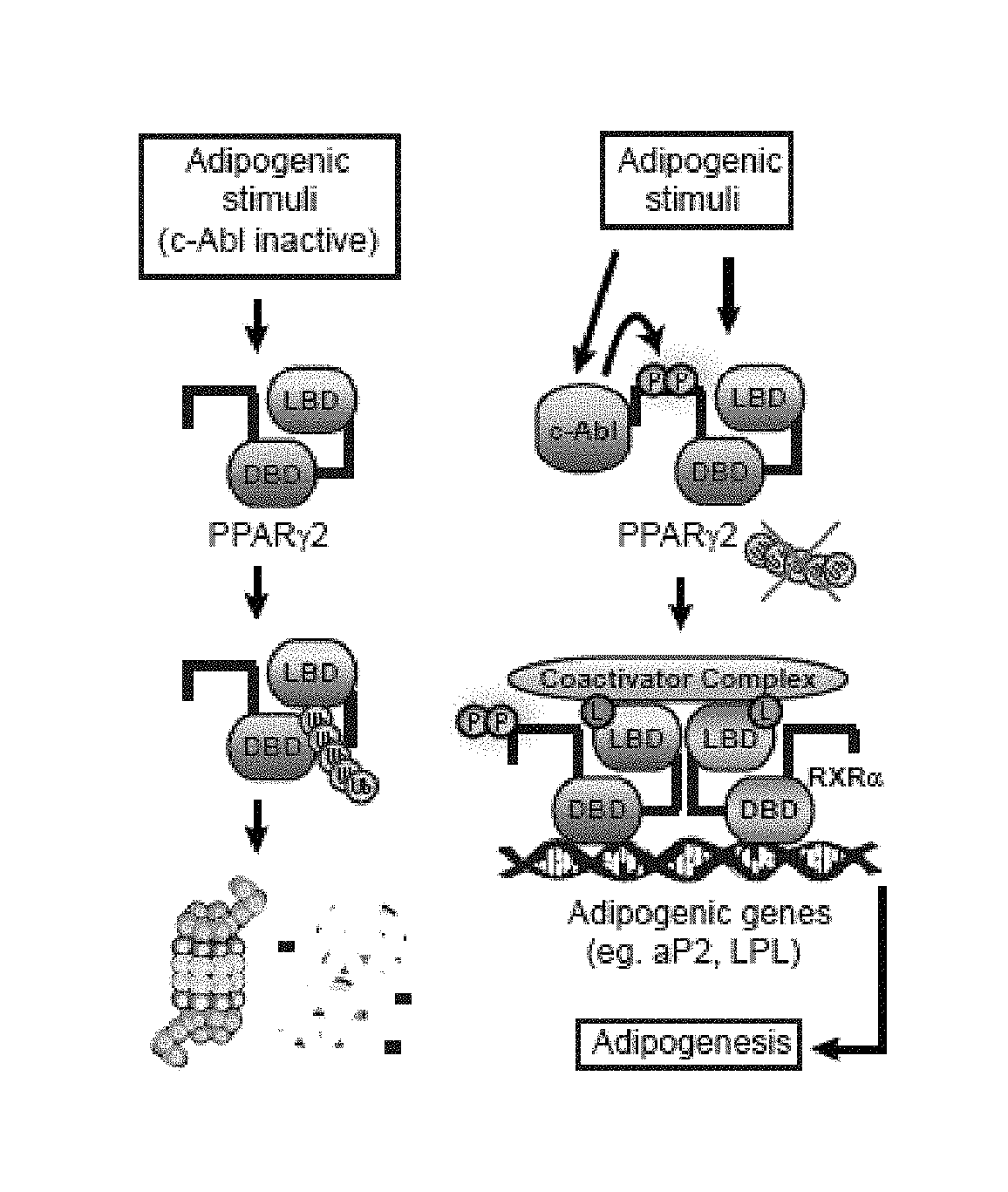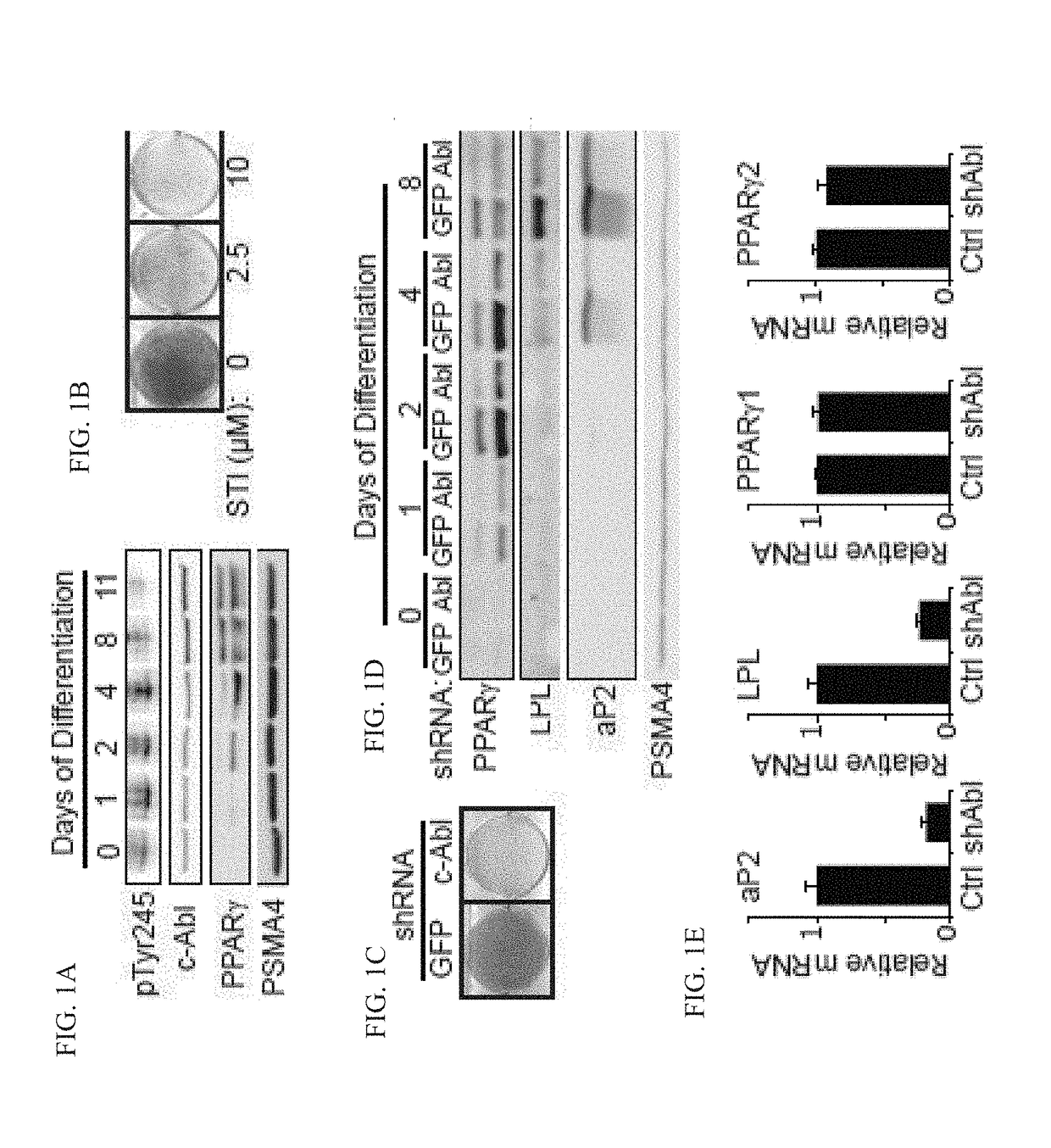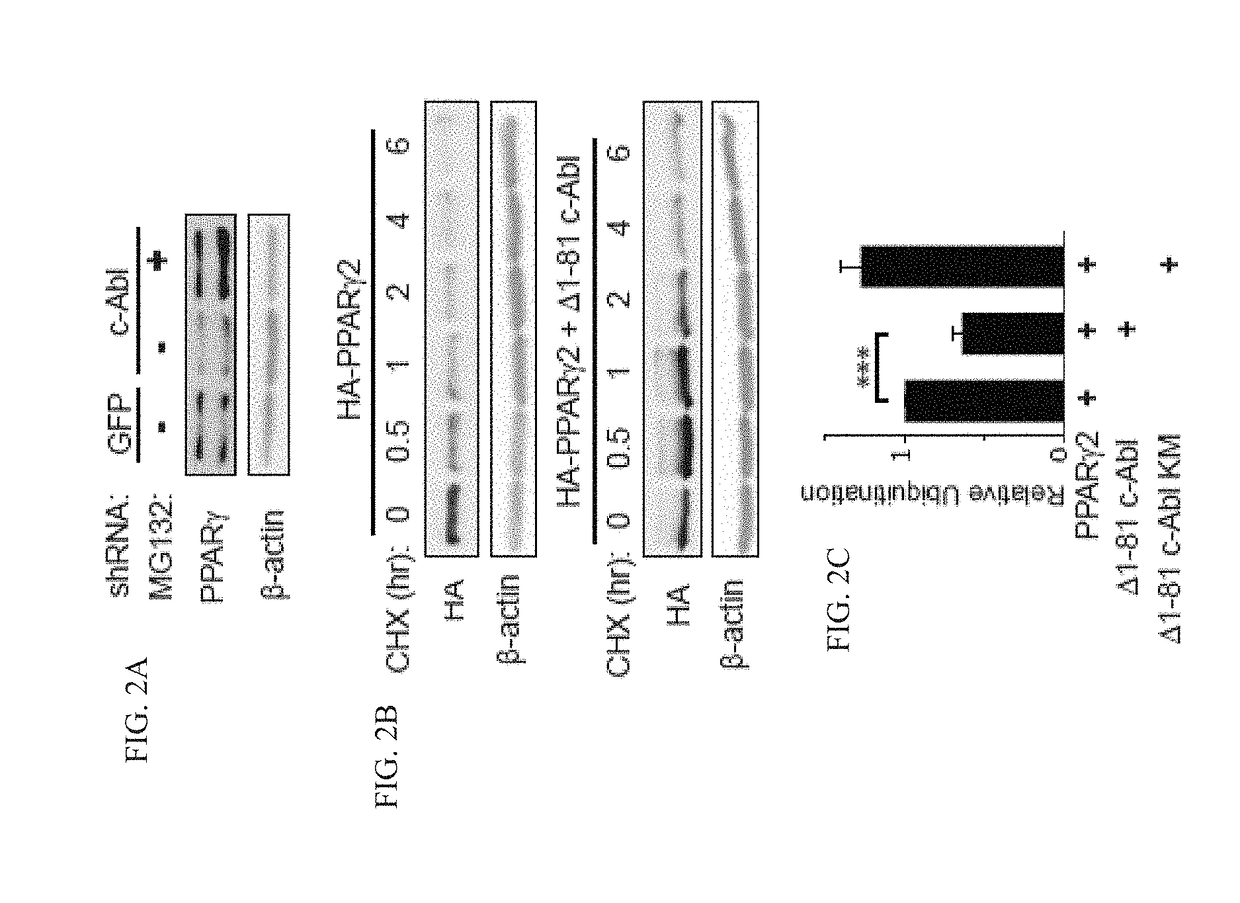Use of agents for treating fat-related disorders
a technology for fat-related disorders and agents, applied in the field of methods of treating fat-related disorders, can solve problems such as rapid growth of significant health problems, and achieve the effects of reducing adipocyte differentiation, and reducing fat content or body weigh
- Summary
- Abstract
- Description
- Claims
- Application Information
AI Technical Summary
Benefits of technology
Problems solved by technology
Method used
Image
Examples
example 1
c-Abl activation in adipogenesis
[0195]c-Abl activation was followed during adipocyte differentiation using an antibody detecting the c-Abl Y245 autophosphorylated form, a hallmark of an active kinase. c-Abl was activated on the first day of differentiation induction and remained active up to mid-differentiation stage (FIG. 1A). Next, c-Abl kinase activity was inhibited using the c-Abl inhibitor STI-571 (Imatinib). STI-571 is also an inhibitor of the tyrosine kinases c-kit and platelet derived growth factor receptor (PDGFR). While c-kit is not expressed in 3T3-L1, PDGFR is a negative regulator of adipocyte differentiation but is only expressed during the first hours of adipogenesis, after which it rapidly declines to an undetectable level. To minimize potential inhibition of PDGFR and specifically target c-Abl, STI-571 was added 7 hours after differentiation onset and treatment was maintained until day 5. Remarkably, even at low inhibitor concentration, adipogenesis was markedly redu...
example 2
c-Abl regulates accumulation of PPARγ2
[0196]The present inventors investigated whether c-Abl might play a role in PPARγ2 accumulation. To check whether the low level of endogenous PPARγ2 expression in c-Abl depleted cells is the result of protein destabilization, they treated c-Abl-depleted 3T3-L1 cells with MG-132, a proteasomal inhibitor (FIG. 2A). PPARγ2 protein level markedly increased after proteasomal blockade, suggesting a role for c-Abl in PPARγ2 accumulation during adipocyte differentiation. Next, the present inventors measured PPARγ2 protein half-life in the presence or absence of an active form of c-Abl (41-81 c-Abl). Following translation inhibition by cycloheximide, the level of PPARγ2 gradually dropped to a minimal level within 6 hrs (FIG. 2B, see also below FIG. 13). Remarkably, in the presence of constitutively active c-Abl PPARγ2 decay was much slower. To investigate the possibility that c-Abl supports PPARγ2 stabilization via inhibition of the poly-ubiquitination o...
example 3
c-Abl Interacts with PPARγ2 and Phosphorylates it
[0197]Having demonstrated that c-Abl is a positive regulator of adipogenesis and its kinase activity is essential for this role, the present inventors next asked whether PPARγ2 is a direct substrate of c-Abl. First, they measured their possible physical association in transfected HEK293 cells. When flag-tagged PPARγ2 was immunoprecipitated, a substantial amount of c-Abl was brought down as well (FIG. 3A). In a reciprocal experiment PPARγ2 was co- immunoprecipitated with c-Abl (FIG. 10A). c-Abl binds proteins through its SH3 domain to the PxxP motifs of the target protein (26). Three PxxP motifs are found in PPARγ2, all of which reside within the AF1 domain (FIG. 3B). The first, 9PxxP12, is located in the unique PPARγ2 N-terminal 30 amino acids that is absent in PPARγ1, the isoform not involved in adipogenesis (6, 27). To check whether the 9PxxP12 is involved in binding to c-Abl, a four amino acids deletion mutant of PPARγ2 was generat...
PUM
| Property | Measurement | Unit |
|---|---|---|
| time | aaaaa | aaaaa |
| body weight | aaaaa | aaaaa |
| blood pressure | aaaaa | aaaaa |
Abstract
Description
Claims
Application Information
 Login to View More
Login to View More - Generate Ideas
- Intellectual Property
- Life Sciences
- Materials
- Tech Scout
- Unparalleled Data Quality
- Higher Quality Content
- 60% Fewer Hallucinations
Browse by: Latest US Patents, China's latest patents, Technical Efficacy Thesaurus, Application Domain, Technology Topic, Popular Technical Reports.
© 2025 PatSnap. All rights reserved.Legal|Privacy policy|Modern Slavery Act Transparency Statement|Sitemap|About US| Contact US: help@patsnap.com



